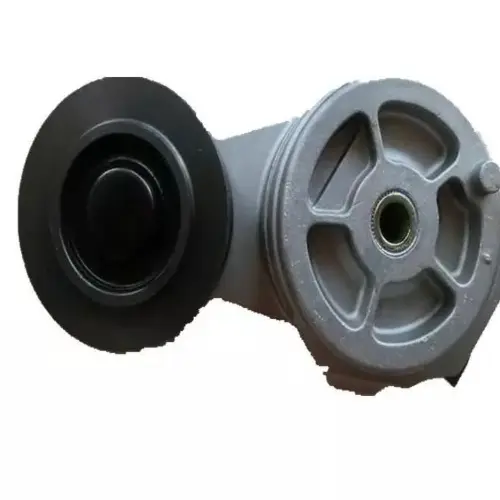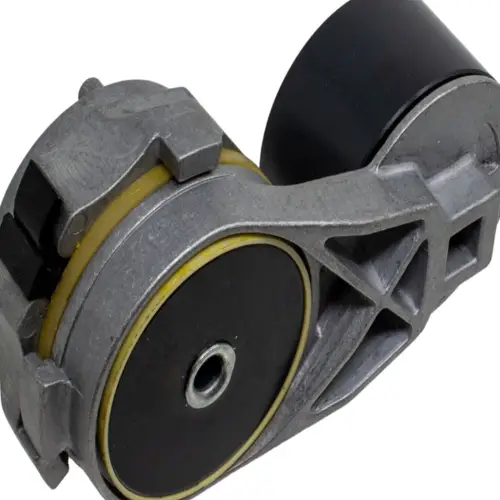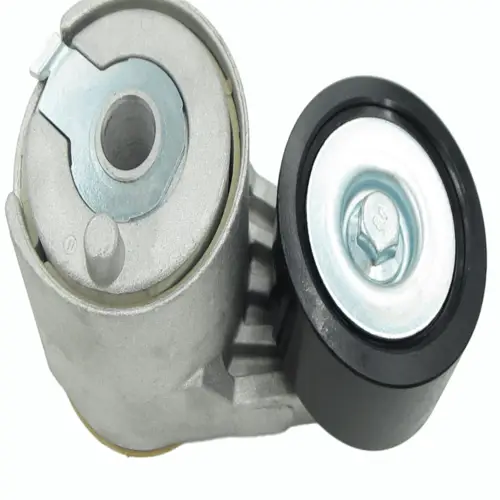Product Description
| Car Fitment | Model | Year | Engine |
| SINOTRUK (CNHTC) | HOWO A7 | 2006- | A7G, A7P |
| ZZ1257 | |||
| ZZ1317 | |||
| ZZ4187 | |||
| ZZ4257 | |||
| ZZ5257 | |||
| ZZ5317, ZZ4257, A7G, A7P, ZZ1257, ZZ5257, ZZ4187, ZZ1317, ZZ5317, ZZ4257, 380, ZZ1367, ZZ5257, zz1167, ZZ5437, ZZ1257, ZZ3257, ZZ1317, ZZ5317, ZZ1257, ZZ5257, ZZ4187, zz3317 | |||
| Howo, CZPT A7 | 2005-, 2006- | 380 | |
| ZZ1257 | |||
| ZZ1257, ZZ5257 | |||
| ZZ1317, ZZ5317 | |||
| ZZ1367 | |||
| ZZ3257 | |||
| ZZ4187 | |||
| ZZ4257 | |||
| ZZ5257 | |||
| ZZ5317 | |||
| ZZ5437 | |||
| zz1167 | |||
| zz3317 |
FAQ:
Q1. What is your terms of packing?
A: Generally, we pack our goods in Carton boxes and then in wooden case.
Q2. What is your terms of payment?
A: T/T 30% as deposit, and 70% before delivery. We’ll show you the photos of the products and packages
before you pay the balance.
Q3. What is your terms of delivery?
A: EXW, FOB, CPT, CIF.
Q4. How about your delivery time?
A: Generally, it will take 7 to 30 days after receiving your advance payment. The specific delivery time depends
on the items and the quantity of your order.
Q5. Can you produce according to the samples?
A: Yes, we can produce by your samples or technical drawings. We can build the molds and fixtures.
Q6. What is your sample policy?
A: We can supply the sample if we have ready parts in stock, but the customers have to pay the sample cost and the courier cost.
Q7. Do you test all your goods before delivery?
A: Yes, we have 100% test before delivery
Q8: How do you make our business long-term and good relationship?
A:1. We keep good quality and competitive price to ensure our customers benefit ;
2. We respect every customer as our friend and we sincerely do business and make friends with them, no matter where they come from.
/* October 22, 2571 15:47:17 */(()=>{function d(e,r){var a,o={};try{e&&e.split(“,”).forEach(function(e,t){e&&(a=e.match(/(.*?):(.*)$/))&&1

Can you describe the various mounting options and installations for belt tensioners in different settings?
Mounting options and installations for belt tensioners can vary depending on the specific application and the belt-driven system’s design. Different settings may require different approaches to ensure proper alignment, tensioning, and functionality of the tensioner. Here’s a detailed description of the various mounting options and installations for belt tensioners in different settings:
- Fixed Mounting:
- Adjustable Mounting:
- Spring-Loaded Tensioners:
- Idler Pulley Tensioners:
- Hydraulic Tensioners:
- Overhead Tensioners:
- Combination Mounting:
The most common mounting option for belt tensioners is fixed mounting. In this configuration, the tensioner is rigidly attached to a stationary part of the system, such as the engine block or a structural component. Fixed mounting provides stability and ensures that the tensioner remains in a fixed position relative to the belt. It is widely used in automotive, industrial, and machinery applications.
In some applications, adjustable mounting options are preferred to accommodate variations in belt length, alignment, or tension requirements. Adjustable tensioners allow for fine-tuning of the tensioning force by enabling adjustments in the tensioner’s position. This can be achieved through slots, elongated holes, or adjustable brackets that provide flexibility in the tensioner’s placement. Adjustable mounting is beneficial when precise tension adjustment is necessary or when belt drives undergo frequent changes.
Spring-loaded tensioners are commonly used in belt-driven systems. These tensioners incorporate a spring mechanism that applies constant tension to the belt. Spring-loaded tensioners can be mounted in various configurations, including fixed or adjustable mounting. The spring mechanism compensates for belt elongation, wear, or thermal expansion, ensuring consistent tension throughout the belt’s operational life.
Idler pulley tensioners utilize an additional pulley to redirect the belt’s path and apply tension. The tensioner is typically mounted on an adjustable bracket or arm, allowing for precise positioning of the idler pulley relative to the belt. Idler pulley tensioners are often used in serpentine belt systems, where multiple accessories are driven by a single belt. Proper alignment and tensioning of the idler pulley are crucial for efficient power transmission and belt longevity.
Hydraulic tensioners employ a hydraulic cylinder or piston to apply tension to the belt. These tensioners are commonly used in applications where high tension forces or dynamic tension control is required. Hydraulic tensioners may have specific mounting requirements due to the need for hydraulic connections, such as hoses or fittings. They are often used in heavy-duty machinery, automotive engines, or other systems demanding precise tension control.
In certain settings, such as conveyor systems or overhead power transmission systems, belt tensioners may be mounted overhead. Overhead tensioners are typically suspended from a support structure, allowing the tensioner to apply tension to the belt from above. This configuration helps maximize space utilization and facilitates maintenance and belt replacement in vertically-oriented systems.
In complex belt-driven systems, a combination of mounting options may be employed. For example, a fixed tensioner may be used in one location, while an adjustable tensioner is used in another to accommodate different belt lengths or alignment requirements. Combination mounting allows for customized tensioning solutions tailored to the specific system design and operational needs.
It is important to note that the specific mounting option and installation for a belt tensioner will depend on the system’s design, space constraints, belt type, and the manufacturer’s recommendations. It is essential to follow the manufacturer’s guidelines and specifications for proper tensioner installation to ensure optimal performance and longevity of the belt-driven system.
In summary, the mounting options and installations for belt tensioners can include fixed mounting, adjustable mounting, spring-loaded tensioners, idler pulley tensioners, hydraulic tensioners, overhead tensioners, and combinations thereof. Each mounting option offers advantages and considerations depending on the application’s requirements and the specific belt-driven system’s design.

What are the typical signs of improper belt tension, and how can belt tensioners address these issues?
Improper belt tension can lead to various issues in belt-driven systems. Recognizing the signs of improper tension is crucial for identifying and addressing potential problems. Belt tensioners play a crucial role in addressing these issues by adjusting and maintaining the proper tension in the belts. Here’s a detailed explanation of the typical signs of improper belt tension and how belt tensioners can address these issues:
- Slippage:
- Excessive Wear:
- Noise and Vibration:
- Overheating:
- Premature Belt Failure:
- Reduced Power Transmission Efficiency:
Slippage occurs when the belt slips on the pulleys instead of maintaining a firm grip. It can be caused by insufficient tension. Signs of slippage include a noticeable decrease in power transmission efficiency, a burning smell from friction, or visible wear on the belt and pulleys. Belt tensioners address slippage by applying the necessary force to increase the tension, improving the grip between the belt and the pulleys and minimizing slippage.
Improper tension can cause excessive wear on belts, pulleys, and other components. Insufficient tension may lead to belt slipping, resulting in accelerated wear. On the other hand, excessive tension can cause excessive stress and strain on the belt, leading to premature wear and potential damage. Belt tensioners help address excessive wear by adjusting the tension to the manufacturer’s recommended range, ensuring proper belt engagement and minimizing wear on the belt and associated components.
Improper belt tension can contribute to increased noise and vibration levels in the system. Insufficient tension may cause belt flapping or fluttering, leading to vibrations and noise. Excessive tension can create excessive forces and induce resonance, resulting in vibrations and noise as well. Belt tensioners address these issues by maintaining the correct tension, minimizing belt movement, reducing vibrations, and lowering noise levels, resulting in smoother and quieter operation.
Inadequate belt tension can cause overheating due to increased friction between the belt and the pulleys. Overheating may manifest as excessive heat radiating from the belt or pulleys, discoloration of the belt, or even belt degradation. Belt tensioners help address overheating by maintaining the proper tension, ensuring efficient power transmission and minimizing friction, which in turn reduces heat generation and helps prevent overheating issues.
Improper tension significantly increases the risk of premature belt failure. Insufficient tension can lead to belt slippage, accelerated wear, and reduced belt lifespan. Excessive tension can cause excessive stress and fatigue, leading to belt breakage or premature damage. Belt tensioners address these issues by maintaining the correct tension, distributing the load evenly across the belt, minimizing stress, and promoting longer belt life.
Improper belt tension can result in reduced power transmission efficiency. Insufficient tension leads to belt slipping, reducing the amount of power transferred from the driving pulley to the driven pulley. Excessive tension can cause increased friction and energy losses. Belt tensioners address these issues by ensuring the proper tension, maximizing the grip between the belt and the pulleys, and optimizing power transmission efficiency.
In summary, improper belt tension can manifest through signs such as slippage, excessive wear, noise and vibration, overheating, premature belt failure, and reduced power transmission efficiency. Belt tensioners address these issues by adjusting the tension to the recommended range, minimizing slippage, reducing wear, damping vibrations, preventing overheating, promoting longer belt life, and optimizing power transmission efficiency. Regular inspection and adjustment of belt tension using appropriate tensioners are essential for maintaining optimal belt performance and preventing potential issues.

Are there specific belt tensioner designs for different applications, like automotive or industrial equipment?
Yes, there are specific belt tensioner designs tailored for different applications, including automotive and industrial equipment. Manufacturers develop specialized belt tensioners to meet the unique requirements and operating conditions of various industries. Here’s a detailed explanation of specific belt tensioner designs for different applications:
- Automotive Belt Tensioners:
- Industrial Belt Tensioners:
- Agricultural Belt Tensioners:
- HVAC and Refrigeration Belt Tensioners:
- Specialized Belt Tensioners:
Belt tensioners used in automotive applications are designed with features that address the specific needs of the automotive industry. They are typically compact, lightweight, and engineered to withstand the demanding conditions found in vehicle engines. Automotive belt tensioners often incorporate automatic tensioning mechanisms, such as spring-loaded or hydraulic designs, to provide continuous tension control and compensate for belt elongation and wear over time. They also incorporate features like torsional vibration dampers to minimize vibrations and noise. Additionally, automotive belt tensioners undergo rigorous testing to meet industry standards and ensure reliable performance in diverse driving conditions.
Industrial belt tensioners are designed to meet the requirements of heavy-duty applications in various industries, such as manufacturing, material handling, mining, and construction. These tensioners are built to withstand high loads, harsh environments, and extended operating hours. Industrial belt tensioners often feature robust construction using durable materials like cast iron or steel. They may incorporate automatic tensioning mechanisms, hydraulic systems, or eccentric designs to provide precise tension control and adaptability to changing operating conditions. Industrial belt tensioners also come in a range of sizes and configurations to accommodate different belt sizes and drive systems used in industrial machinery.
Agricultural equipment, such as tractors, combines, and harvesters, have specific belt tensioner designs suited for the demanding conditions encountered in farming operations. Agricultural belt tensioners are designed to withstand dust, debris, and exposure to outdoor elements. They often incorporate automatic tensioning mechanisms with robust spring-loaded systems to compensate for belt wear and maintain optimal tension during extended periods of use. These tensioners are engineered to provide reliable performance in agricultural machinery, contributing to efficient power transmission and reduced maintenance requirements.
Belt tensioners used in HVAC and refrigeration systems are designed to ensure reliable and efficient operation of fans, blowers, compressors, and pumps. These tensioners are typically compact and incorporate automatic tensioning mechanisms to maintain consistent belt tension under varying operating conditions. They may also include features like vibration dampening to reduce noise and enhance system performance. HVAC and refrigeration belt tensioners are engineered to meet the specific requirements of cooling and ventilation systems, contributing to energy efficiency and prolonged equipment lifespan.
There are also specialized belt tensioners designed for specific applications or industries. For example, in the woodworking industry, belt tensioners with quick-release mechanisms are used to facilitate efficient belt changes. In the textile industry, belt tensioners with precise tension control are employed to ensure proper synchronization of moving parts. Marine propulsion systems utilize belt tensioners designed for marine environments, resistant to corrosion and capable of withstanding vibration and shock. These specialized tensioners are tailored to the specific needs of their respective industries, incorporating features and materials that optimize performance and durability.
Overall, the design of belt tensioners is influenced by the unique requirements of different applications and industries. By considering factors such as load capacity, environmental conditions, tension control mechanisms, and specific industry standards, manufacturers develop belt tensioners that are well-suited for their intended applications, ensuring optimal belt performance and system reliability.


editor by lmc 2024-12-11









